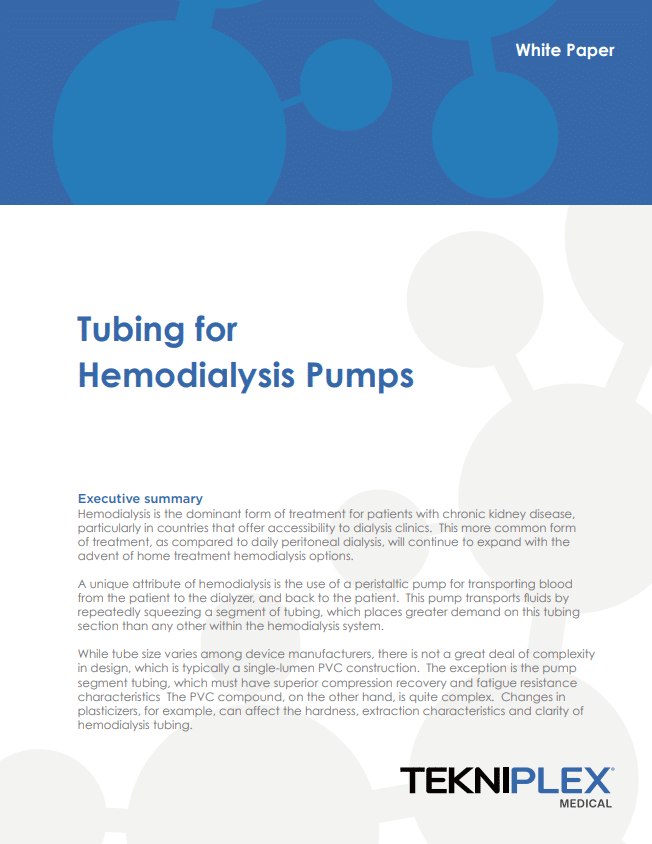Tubing for Hemodialysis Pumps
Executive Summary
Hemodialysis is the dominant form of treatment for patients with chronic kidney disease, particularly in countries that offer accessibility to dialysis clinics.
A unique attribute of hemodialysis is the use of a peristaltic pump for transporting blood from the patient to the dialyzer, and back to the patient. This pump transports fluids by repeatedly squeezing a segment of tubing, which places greater demand on this tubing section than any other within the hemodialysis system.
The dialysis tubing segment must have superior compression recovery and fatigue resistance. However, PVC compounds are complex and changes in plasticizers, for example, can affect the hardness, extraction characteristics and clarity of hemodialysis tubing.

A peristaltic pump transports blood from the patient to the dialyzer
Learn more about what tubing attributes impact performance:
- Plasticizer options and how they affect hardness, extraction characteristics and clarity of hemodialysis tubing
- Desired tubing characteristics include flexibility/drapability, blood compatibility, kink resistance, sterilizability and a smooth inner liner surface to minimize turbulence and potential damage to blood cells
- Tubing must exhibit superior compression recovery or “hoop strength” and fatigue resistance
- Flexibility, size and wall thickness consistency and how each impacts performance



